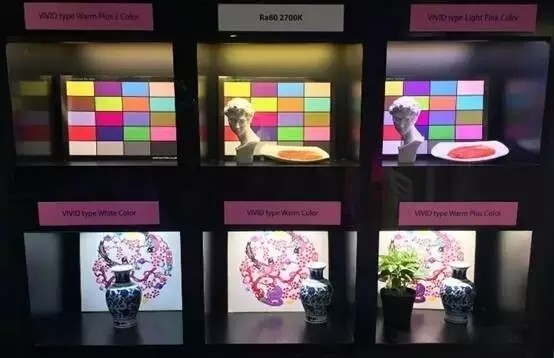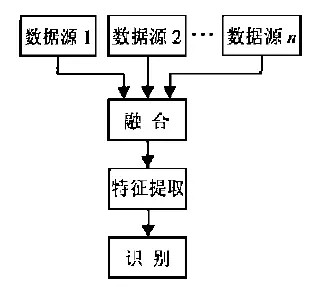LED COB (Chip On Board) package means that the LED chip is directly fixed on the printed circuit board (PCB), for engagement LED packaging technology of the electrical connection by wire bonding between the chip and the circuit board. It can package tens or even hundreds of chips in a small area, and finally form a surface light source. Compared with the point source package, the COB surface light source package technology has the advantages of low price (only about 1/3 of the same chip), space saving, easy heat dissipation, improved luminous efficiency, and mature packaging technology.
Due to its superior heat dissipation performance and low manufacturing cost, COB packaged LED light sources are popular among many packaging companies. For high-power COB packages, heat dissipation is a critical factor affecting long-term reliability. Increasing the junction temperature of the COB package will reduce the overall efficiency of the LED, reduce the forward voltage, resulting in red shifting of the emitted light, reducing service life and reliability.
LED thermal research mainly includes three levels: package, substrate and overall level. In solving the heat dissipation problem of high-power COB package, most researchers first propose a structural model and simulate the heat dissipation process of the entire package structure under certain conditions through software (finite element analysis software ANSYS, computational fluid dynamics software CFD, etc.). The temperature of the part is tested and the simulation results are verified. In addition, an important factor affecting the performance of high-power COB packages is the performance of the package.
1. Performance of silicone for high power LED COB package
At present, there are many kinds of silica gels that can be used in high-power LED COB packages on the market, and a large number of them are domestically produced silica gels, and the main advantage is that the price is low. Table 1 below compares the properties of some silica gels currently on the market.

As can be seen from Table 1, the refractive index of silica gel can be divided into two main grades: low refractive index (1.42) and high refractive index (1.54). The use of high refractive index silica gel during the encapsulation process can effectively reduce the loss of photons at the interface, thereby increasing the luminous flux of the light source.
Another important parameter affecting the performance of silica gel is the light transmittance. It can be seen from the table that the transmittance of most encapsulated silica gel can reach more than 98%. Among them, Dow Corning's OE-6550 silica gel has a light transmittance of 100% and a refractive index of 1.543. The curing conditions are simple. Curing at 150 ° C for 1 h, wide temperature range (-60 ~ 200 ° C), performance has a great advantage, but the disadvantage is expensive (price 5700 ~ 6800 yuan / kg).
Comparing the performance, it can be seen that the performance of many domestic silica gels is close to that of Dow Corning. Some merchants also claim that their silica gel can completely replace OE-6550 silica gel for LED packaging.
2. Research progress of high power LED COB package
The COB integrated package has better heat dissipation performance than a single discrete package, mainly because the COB package directly transfers heat to the substrate and then conducts through the substrate to the outer casing. In the high-power COB package, multiple high-power chips are closely integrated together, and the heat dissipation problem is still the first problem to be solved. In response to this, many researchers at home and abroad have studied the heat dissipation of COB package based on software simulation.
(1) Lanhai et al. used the finite element thermal simulation method to analyze the metal substrate and ceramic substrate commonly used in COB packaging process, and concluded that the thermal resistance of the ceramic substrate as the packaging material is the thermal resistance of the metal substrate. /2, and the ceramic substrate also has a larger thermal management optimization space.
(2) Ma Jian et al. used TracePro software simulation and experiment to analyze the main factors affecting the LED luminescence performance of COB package while considering the phosphor coating method and reflector structure. The research results show that the angle is 30°, cup The deep and large conical reflector is packaged, and the product has good luminescence performance. Coating the phosphor with the phosphor away from the chip can increase the luminous efficiency by about 5%.
(3) Li Weiping proposed a new COB free-form lens package structure (see Figure 1 below). The structure was simulated by TracePro. The results show that the device can achieve a specific optical distribution and the light extraction efficiency is higher than 90%.

(4) Jiang Bin et al. proposed three LED COB packaging methods, the package structure is COB-I, COB-II and COB-III, respectively. The schematic diagram is shown in Figure 2. The finite element simulation and experimental measurements show that the junction temperature of COB-III is 21.5 °C and 42.7 °C lower than COB-II and COB-I, respectively, and the thermal resistance is 25.7K/W and 58.8K/W, respectively, and COB-III. Light decay is also smaller.

Win101 Smart Terminal,Smart Pos Payment Terminal,Android Smart Pos,Smart Mobile Payment Terminal
Guangzhou Winson Information Technology Co., Ltd. , https://www.winsonintelligent.com
